#comte de paris
Explore tagged Tumblr posts
Text

Equestrian portrait of Louis Philippe Albert d'Orleans, Count of Paris (1834-1894) and Robert d'Orleans, Duke of Chartres (1840-1910). By Alfred de Dreux.
#alfred dedreux#alfred de dreux#pierre alfred dedreux#equestrian portrait#royaume de france#maison d'orléans#bourbon orleans#louis philippe albert d'orléans#comte de paris#robert d'orléans#duc de chartres#kingdom of france#house of bourbon#house of orleans
5 notes
·
View notes
Text

Eugène Delacroix, L'appartement du comte de Mornay, 1833, oil on canvas.
#Eugène Delacroix#Delacroix#comte de mornay#rue de verneuil#paris#oil painting#oil on canvas#french art#french artist#french painter#july monarchy#19th century#19th century art#19th century interior#period design#decor#period decor#french design#louvre#painting#art#artwork#art history#france#1830s#interior design#interior#design#domestic interior
58 notes
·
View notes
Text
I love "The Count of Monte Cristo". The story, in any version, be it the book, a movie or a musical, actually has my entire heart.
All the plotting, scheming, secrets and plans. The masquerading for other people and forseeing every move to come out on top, and most of all, the way that it all perfectly comes together. Like Dumas really went "Chechov's gun? I'm gonna make Chechov's hair relevant to the story!" and my autistic brain is all in for that kind of stuff.
And also the book is very long, so I have time to properly process everything that's going on. So if anone was about to suggest me a book, I'm not hearing any of it, unless it takes me 5 years to read and every time I open it for longer than a day it actually makes me feel like I am also a part of the Parisian society, exchanging gossip and going to fancy dinners in my carriage pulled by newly bought horses.
#the count of monte cristo#tcomc#tcomc 2024#edmond dantes#alexandre dumas#chechov's gun#books#bookworm#literature#classic literature#count of monte cristo#monte cristo#paris#le comte de monte cristo#autism#neurodivergent
33 notes
·
View notes
Text
Lavalette about the "divorce"
This is taken from "The Memoirs of Count Lavallette". An interesting remark (allegedly) made my Napoleon at the time when he finally decided to give Josephine the boot:
A few days before he had sent for me. He had been looking out for some friend of the empress, who might help to sweeten the bitter about to be presented to her. His choice fell on me. "The nation," he said, "has done so much for me, that I owe her the sacrifice of my dearest affections. Eugène is not young enough for me to keep him for my successor; nor am I old enough to give up all hopes of having children, and yet by Josephine I can have none. The tranquillity of France requires my choosing a new consort [...]"
Emphasis by me.
This statement, if true, would mean that the idea of Eugène suceeding Napoleon indeed had been around and had been seriously considered, at least by some people at court. But much more interesting to me is the reason why it can't happen, according to Napoleon: Eugène is too old.
Eugène, by the end of 1809, had only just turned 29. And with Naps being 40 and often enough in danger of being killed either in war or through assassination - would a successor old enough to immediately take over not have been advantageous?
But of course, Eugène also had been trained in the art of governing a country ever since he had been made viceroy of Italy (this fact was probably what made him look to some as the likely successor - he seemed as if Napoleon already prepared him for it). He was a grown man and, even if he usually in the end obeyed, he did have his own ideas.
Which was precisely the problem, in my opinion. A successor already old enough to develop his own political vision would have been somebody whose opinion an emperor might increasingly need to take into account. A newly born heir would not have any political ideas of his own for almost another two decades. Giving his father a lot more time to govern without the slightest considerations for anything but his own will.
This may have been the cause for Napoleon to call Eugène a "tête carrée" (blockhead, pigheaded) later on Saint Helena. Because Eugène indeed had dared to occasionally consider Napoleon's orders not quite perfect.
It's also why I feel like family life with the King of Rome might have turned much less idyllic very quickly, if Napoleon and his son had lived together until the latter reached puberty. Sooner or later, a Napoleon II would have decided he wanted to do some things differently than his father. And the opinion of the official crown prince could not have been brushed aside as easily as that of mere government officials.
#napoleon's family#eugene de beauharnais#antoine marie chamans comte de lavalette#the “divorce”#paris 1809
31 notes
·
View notes
Text

L'Itala qui a remporté le raid Pékin-Paris de 1907. Après la course, le comte De Dion a déclaré ''Un homme ayant une voiture peut aller n'importe où dans le monde''. - source Antoni Gual.
86 notes
·
View notes
Text
My plan for this blog in 2024 is to follow along with Les Mis Letters again in both French and English (I think I may try a different English translation!) but I will not be reading as closely as I did in 2023. I will still be posting and reblogging about Les Mis and les mis letters, though!
My goal for the start of the year is to make decent headway with my Original French Concept Album translation & annotation project! I have a lot of the translations on the back burner and this seems like a good time finish annotating them.
I'm also planning to read more French classics this year! (I hope nobody minds if this les mis blog branches out into a 19th-century-France-but-mostly-still-Les-Mis blog). I'm going to start with Notre Dame de Paris because 1) it's still Hugo 2) it's relatively short and 3) I'm interested in comparing the language with the French musical!
After that I think I will read and blog about Le Comte de Monte Cristo because it won in the poll I made about what I should read next, and I'm familiar with the story, having read sections in French courses. I hope to eventually get to every book on that list but I think I have to start with small goals for the year.
If anyone is interested in reading these books along with me I would be overjoyed. I saw some interest in a Count of Monte Cristo daily email letter and honestly if there's enough interest I would be willing to start one.
I'm really excited to get started on these projects in 2024 and I hope it continues to be interesting to all those who follow me even if it's not strictly Les Mis!
#les mis letters#original french concept album#victor hugo#notre dame de paris#le comte de monte cristo#the hunchback of notre dame#the count of monte cristo#personal
31 notes
·
View notes
Text
I am French, I went to Versailles, I went to Paris, and yet when Dumas said Villefort was transferred to Versailles, I can't help but wonder : "was it already part of the city, or was he transferred to a goddamn castle??"
I am dumb.
5 notes
·
View notes
Text
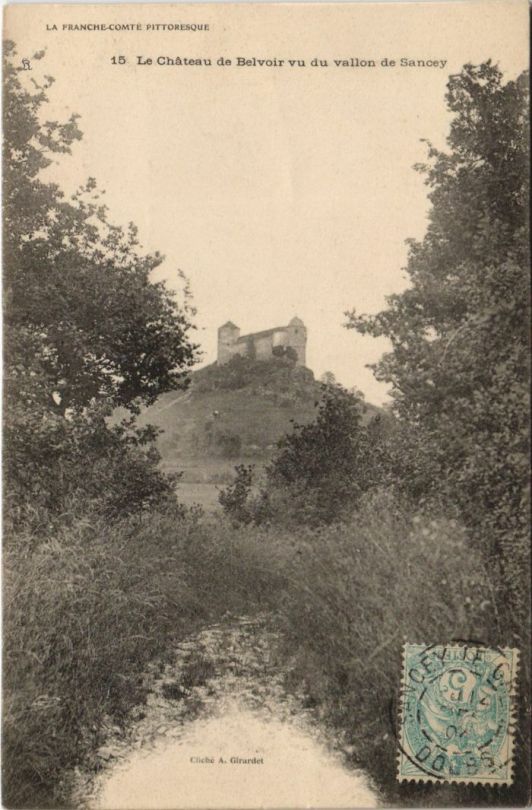
12th-century Château de Belvoir, Franche-Comté region of eastern France
French vintage postcard, mailed in 1904 to Paris
#comt#historic#château de belvoir#chteau#photo#briefkaart#vintage#region#1904#th#sepia#eastern#photography#12th-century#carte postale#paris#postcard#mailed#postkarte#franche-comté#france#postal#tarjeta#ansichtskarte#french#old#franche#ephemera#de#belvoir
6 notes
·
View notes
Text
La Légende de Monte-Cristo : Gjon’s Tears et Philippine Lavrey au cœur d’un musical grandiose
Porté par le souffle du succès retrouv�� du chef-d’œuvre d’Alexandre Dumas, Le Comte de Monte-Cristo via le film à succès, le comte revient sur le devant de la scène… littéralement. Alors que le film événement a relancé la passion du public pour cette fresque romanesque, plusieurs projets ont émergé. Parmi eux, un spectacle musical autrefois porté par Calogero, qui n’a malheureusement jamais vu le…
#événements majeurs scène musicale 2026 comédie musicale Alexandre Dumas#comédie musicale Alexandre Dumas 2026#comte de Monte-Cristo musical#Dôme de Paris 2026#Gjon’s Tears Comte de Monte-Cristo#Gjon’s Tears rôle Comte de Monte-Cristo musical#La Légende de Monte-Cristo tournées France Belgique Suisse#Nakache Entertainment Narya Productions#Philippine Lavrey Mercédès#Philippine Lavrey Mercédès comédie musicale Monte-Cristo#projet musical Dumas événement majeur 2026.#Serge Postigo mise en scène comédie musicale#spectacle musical La Légende de Monte-Cristo Dôme de Paris 2026#spectacle musical Monte-Cristo 2026#tournée La Légende de Monte-Cristo en France Belgique Suisse
1 note
·
View note
Text
La Légende de Monte-Cristo : Gjon’s Tears et Philippine Lavrey au cœur d’un musical grandiose
Porté par le souffle du succès retrouvé du chef-d’œuvre d’Alexandre Dumas, Le Comte de Monte-Cristo via le film à succès, le comte revient sur le devant de la scène… littéralement. Alors que le film événement a relancé la passion du public pour cette fresque romanesque, plusieurs projets ont émergé. Parmi eux, un spectacle musical autrefois porté par Calogero, qui n’a malheureusement jamais vu le…
#événements majeurs scène musicale 2026 comédie musicale Alexandre Dumas#comédie musicale Alexandre Dumas 2026#comte de Monte-Cristo musical#Dôme de Paris 2026#Gjon’s Tears Comte de Monte-Cristo#Gjon’s Tears rôle Comte de Monte-Cristo musical#La Légende de Monte-Cristo tournées France Belgique Suisse#Nakache Entertainment Narya Productions#Philippine Lavrey Mercédès#Philippine Lavrey Mercédès comédie musicale Monte-Cristo#projet musical Dumas événement majeur 2026.#Serge Postigo mise en scène comédie musicale#spectacle musical La Légende de Monte-Cristo Dôme de Paris 2026#spectacle musical Monte-Cristo 2026#tournée La Légende de Monte-Cristo en France Belgique Suisse
1 note
·
View note
Text


Plaque en hommage à : Auguste Comte
Type : Lieu de résidence
Adresse : 10 rue Monsieur le Prince, 75006 Paris, France
Date de pose : mars 1894 [inscrite]
Texte : Auguste Comte, né à Montpellier le 19 janvier 1798, fondateur de la sociologie instituant la religion de l'humanité, habita cette maison depuis le 15 juillet 1841, jusqu'à sa mort le 5 septembre 1857
Quelques précisions : Auguste Comte (1798-1857) est un philosophe et sociologue français, considéré comme le fondateur du positivisme, une philosophie de la science notamment basée sur la loi des trois états des connaissances humaines qui lui permet d'établir une classification des sciences. Sa pensée est résumée dans des ouvrages comme ses Cours de philosophie positive, parus de 1830 à 1842. Il est également professeur de plusieurs disciplines, dont l'astronomie et les mathématiques, au sein de divers établissements comme l’École polytechnique, et acquiert une excellente réputation dans le monde académique. Il s'intéresse également à la vie politique française, et fonde par exemple durant la Révolution de 1848 la Société positiviste qui cherche à influencer la politique du gouvernement selon les principes du positivisme, s'inscrivant dans une certaine continuité du saint-simonisme : il fera ainsi paraître un Système de politique positive. A la fin de sa vie, il donne au positivisme une dimension religieuse, la présentant comme une "religion de l'Humanité" et fondant une Église positiviste, dont les principes sont par exemple formalisés dans le Catéchisme positiviste (1852). Décédé des suites d'un cancer de l'estomac, il laisse un important héritage en philosophie. D'autres plaques commémoratives en son honneur peuvent être trouvées en France, en particulier à Paris et à Montpellier, sa ville natale.
0 notes
Text
Victor Lustig, escroc célèbre comme l'homme qui a vendu la tour Eiffel deux fois
Nouvel article publié sur https://www.2tout2rien.fr/victor-lustig-escroc-homme-qui-a-vendu-la-tour-eiffel/
Victor Lustig, escroc célèbre comme l'homme qui a vendu la tour Eiffel deux fois
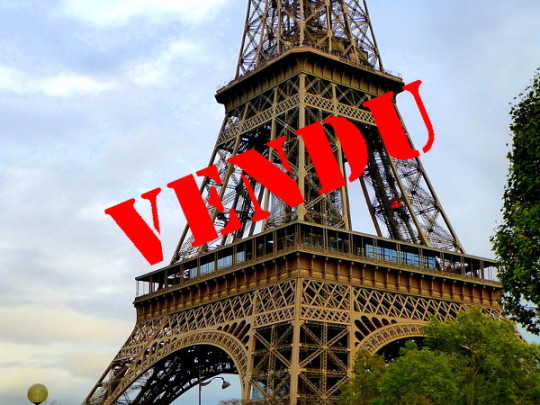
#20eme siecle#al capone#Alcatraz#billet#billet de banque#comte#escroquerie#histoire#paris#tour Eiffel#USA#Victor Lustig#vintage#imxok#people
0 notes
Text
Armand, Haussmann, and Paris:
The thing about Paris that's not really discussed in the VC books themselves is the Haussmann project.
In 1853 Napoleon III commissioned Haussman to completely renovate Paris. The plan was to tear down all of the old structures and rebuild the city; reorganizing the streets and reshaping them to accommodate more green spaces, and replacing smaller buildings with taller apartment blocks in more uniform style.
The Paris Armand knew when he arrived as the coven master and which he came to know as the theater leader would have looked something like this:




Dark, winding streets leading off wide boulevards and short, leaning buildings.
The Haussman project would see all of these places systematically torn down, occupants removed to other areas of the city while new buildings were put in their place. In some areas workers were destroying and rebuilding things 24 hours a day.
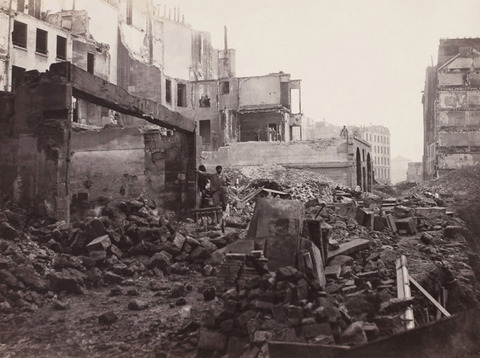
At this time Armand would have been living at the theater on the boulevard du Temple, Paris's street of theaters:

This dagguerotype shows the boulevard in 1838. This painting, in 1862, looks much the same:

But by 1863 all but one theater on the street had been destroyed, and that was only because that theater was on the opposite side of the street shown in the painting. How and why it wasn't pulled down, I don't know- no information on it seems to exist, just like no explanation for the very small handful of other old structures that were left untouched.
That theater, the Théâtre Déjazet, still exists today. But it was established in 1770 by Comte de Artois, so while it could have been Anne's inspiration for Armand's theater it's not the 'rickety wooden rat trap' that seats 300 that Lestat describes in TVL.
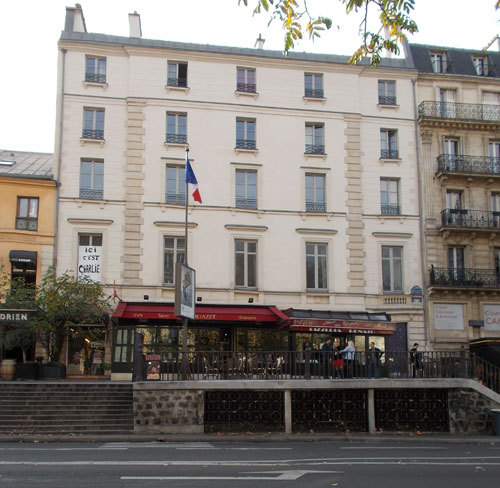
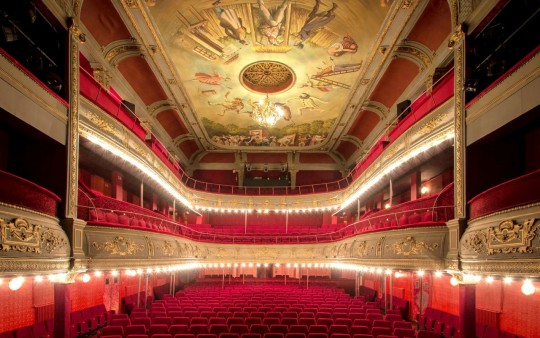
Anyways, knowing all of this, I think it makes even more sense why Armand so quickly grabbed onto Louis and was ready to run away with him at any cost.
Armand, who'd been kidnapped from the monks, who'd had his palazzo torn out from under him, who'd established something of an existence under Les Innocents and was then ripped out of that world when the cemetery was destroyed. Who was watching the city he'd finally come to know get systematically torn apart. Everything that was familiar to him was being taken again.
So why not let Louis burn the theater? He arrived in Paris in 1870, just as Haussman was dismissed. But the work of destroying and rebuilding Paris was set to carry on. Chances were the Theatre de Vampires would be next, and if that were the case there's no way the crypts beneath the place would remain safe and undiscovered.
And if he'd stayed where would they go during the renovation? What would they do? What would the point be in continuing trying to run a coven he was bored of and a life he didn't care for in a new location?
Armand was going to have to begin again somewhere- better that be with Louis, out in the world, than roaming a now unfamiliar Paris. And even though he didn't burn the theater himself, allowing/instigating Louis to do it still gave him more control than letting a stranger come in at some unpredictable moment to demolish things all over again.
(And what of Lestat, what does he feel about these changes? He never could have shown Louis the Paris he knew and loved, which existed when Louis was still mortal- that Paris was largely gone)
Chances were Anne might not have known most of this at the time she wrote interview or even TVL. But I think it still makes a lot of sense and brings up a point about Armand and immortality that I don't see brought up much- that not only do vampires lose every mortal they've ever known, but with time they also see the destruction of every place they've ever known or loved.

(ps: I'm not an expert on this topic or anything, so if anyone does know why some buildings were unchanged or has any interesting historical info to add by all means please, reblog and add it on!)
#paris was amazing#but man standing outside boullion and seeing the last theater on the street#made it really hit hard that nothing stays#and those things that do stay aren't at all the same#and knowing now that paris was transformed in just a couple decades#and the paris louis was so amazed by had so little ties left#to the paris that would have existed when he was a boy#it's a lot!!!!!#vc meta#armand#louis de pointe du lac
164 notes
·
View notes
Text

After a decade of ceaseless plotting, rumormongering, and some discreet poisonings, Comte and Comtesse de Frou Frou have finally gained their rightful place among the inner circle of the royal family! While cowardly nobles might be fleeing Paris for their country estates, the de Frous Frous are staying put. 1789 is going to be their year!
278 notes
·
View notes
Photo

🦎 Oeuvres du comte de Lacépède Paris: P. Duménil, 1836.
156 notes
·
View notes
Text

The Studio of Comte Deheaulme de Vallombreuse , 36 Rue Jouffroy, Paris. - Akseli Valdemar Gallen-Kallela , 1886.
Finnish, 1865-1931
Pastel , 58.4 x 42.5 cm.
127 notes
·
View notes